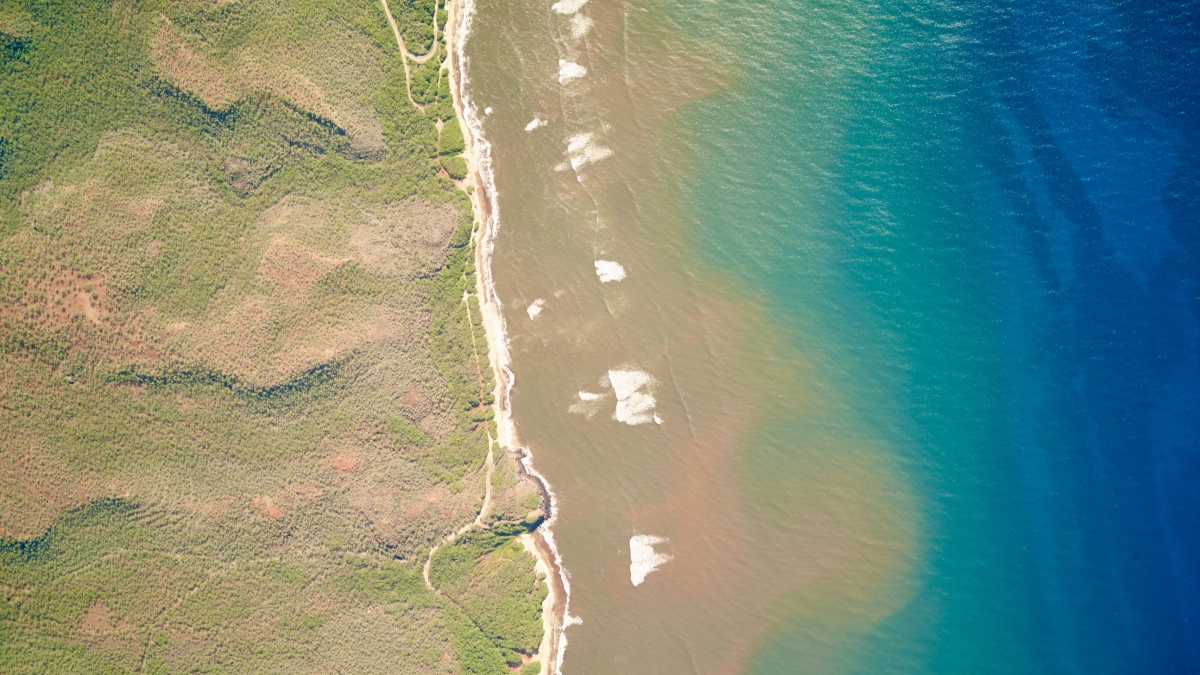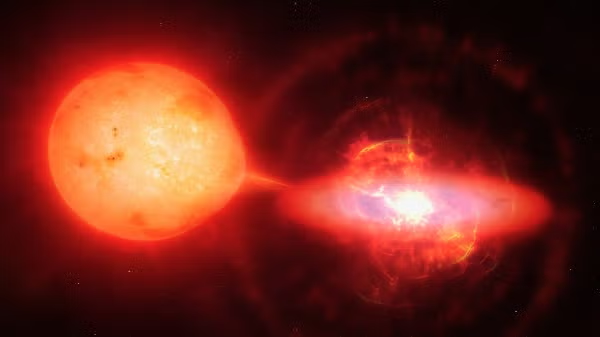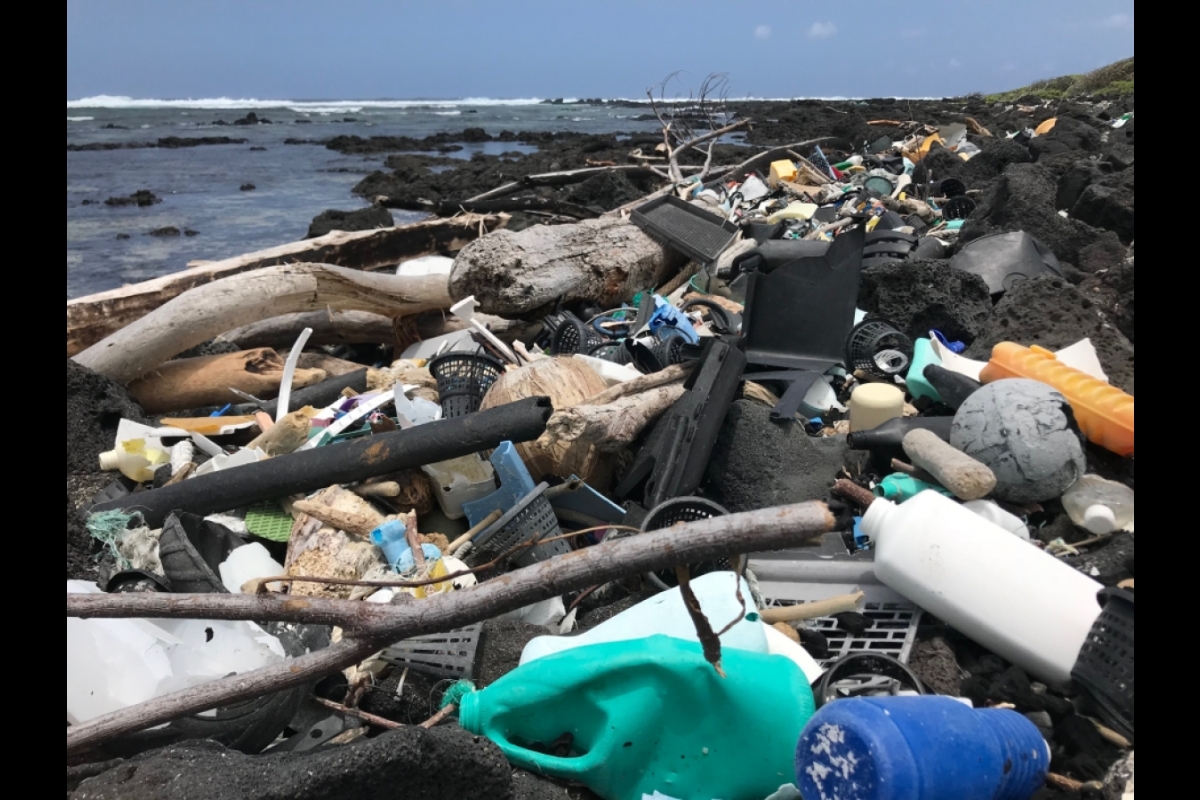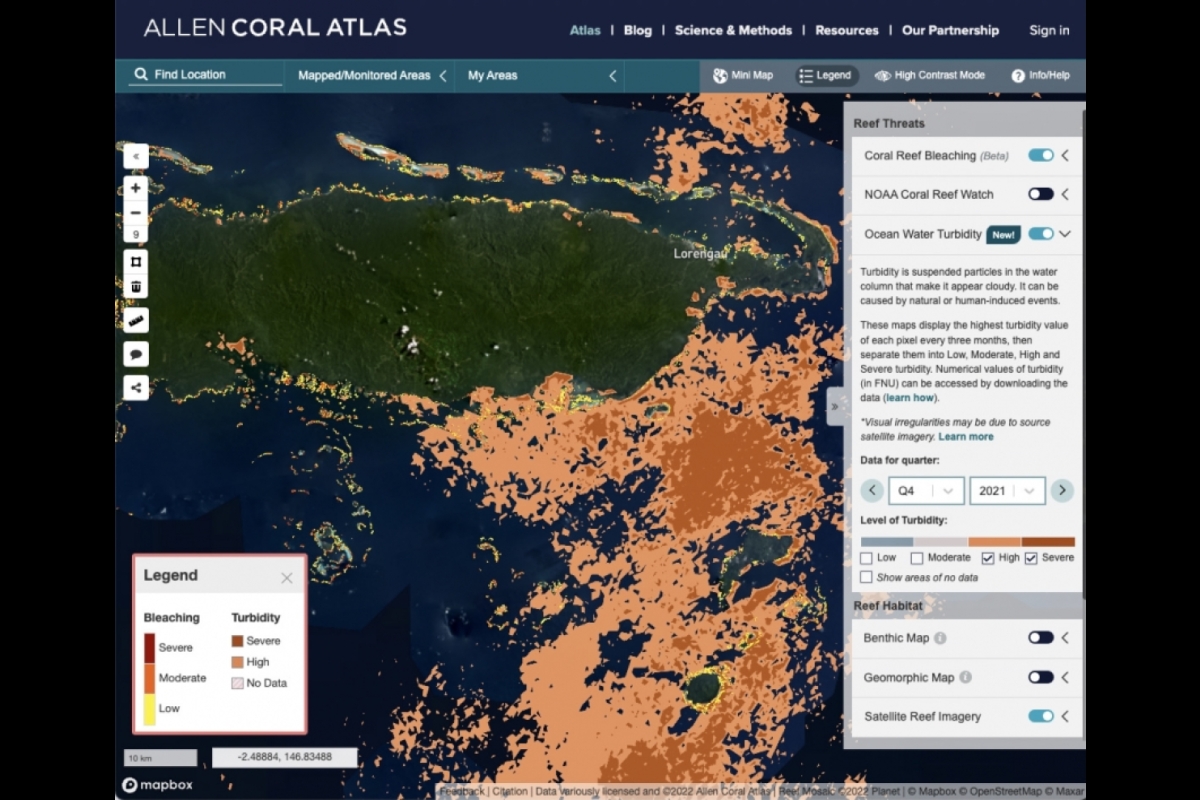ASU's Allen Coral Atlas launches improved tool to uncover reef threats, support conservation measures

The loss of coral reefs is a serious threat to the health of marine ecosystems around the world.
Rising ocean temperatures and coastal pollution are among many environmental stressors that contribute to the degradation of critical coral reef environments. Additional threats including deforestation, agricultural pollutants and land development are damaging coastal marine zones at an alarming rate.
Today, the Allen Coral Atlas at Arizona State University is launching a novel turbidity monitoring tool, which is part of a new toolkit called “Reef Threats.” The Reef Threats system provides global, real-time, integrated data on bleaching, ocean temperature and turbidity. Turbidity is the "muck," mostly from neighboring land use, that can harm coastal coral habitats.
The expanded capability of the atlas’s monitoring system will provide crucial information for conservation managers around the world tasked with deciding where and how to best protect, support and save coral reefs.
“Each Allen Coral Atlas monitoring tool we create offers new insight into how conditions are changing on coral reefs,” says Greg Asner, director of ASU’s Center for Global Discovery and Conservation Science with the Julie Ann Wrigley Global Futures Laboratory.
“The new Reef Threats toolkit will link changes in ocean temperature, turbidity and coral bleaching to coral loss and reef change over time. This is important because now we’ll see both the human drivers and the reef response with increasing breadth and detail. We’re hopeful that innovative mitigation measures will emerge for coral reefs worldwide,” Asner says.
Video (no audio) shows dynamic water quality data on the Jamaican coastline. Credit: Allen Coral Atlas
Brianna Bambic leads the Allen Coral Atlas engagement team by facilitating workshops and field opportunities to use data from the atlas in real time. Working directly with researchers, students, governments and coastal managers in reef communities around the world, Bambic says the new tool will make a global impact in reef management.
“In a time of increasing human disturbance both on land and in our oceans, dynamic turbidity monitoring at this scale will drastically improve time and efficiency, as well as prioritize areas for conservation,” says Bambic, senior manager of global engagement with the ASU Center for Global Discovery and Conservation. “These new data can help local communities make more informed decisions about where to restore reefs and mangroves, and it will help identify sources of pollution caused by coastal land development and urban runoff.”
Having a visual, real-time tool provides an immediate focus on conservation action, and can help reduce the time it takes to complete a report. For example, the Ministry of Environment of Sri Lanka is creating an Environmentally Sensitive Areas map of Sri Lanka. The atlas data will dramatically cut down the time and resources it takes to compile their reports, thus more time can be used for mitigation and conservation action.
Bambic says with real-time feedback to see where the coast is being disturbed, coastal communities can monitor if and when their restoration efforts are making a difference.
What is ocean turbidity?
Turbid water is cloudy and heavy with sediment, contaminants and pollutants stemming from land damage and disturbances. Coastal ocean turbidity is an accepted index of water quality that has been widely applied in field-based water quality monitoring programs. For example, the United States Geological Survey and National Water Quality Program use this index.
However, field-based point recordings have extremely limited spatial coverage. As a result, it is challenging to scale field data to large regions to capture the extent, temporal variation and sources of turbid waters.
Saving coral reefs requires the identification and reduction of local stressors and the cumulative impacts caused by human activities, particularly overfishing, coastal water pollution and land development.
“The muck smothers corals that generate habitat for other marine species and for humans. The improved turbidity monitor uses satellite imagery taken on a regular basis worldwide,” Asner says. “The tool uses European Sentinel-2 data, and while it does come with some satellite-based artifacts, it’s important to push our monitoring boundaries to provide timely, detailed information about the health of coral reefs.”
The Allen Coral Atlas uses satellite imagery, advanced analytics and global collaboration to create maps of and monitor threats to marine ecosystems’ benthic and geomorphic data in unprecedented detail. The atlas is a collaborative project led by the ASU Center for Global Discovery and Conservation Science in partnership with Vulcan Inc., Planet Inc., the University of Queensland and the Coral Reef Alliance.
Top photo: Rising ocean temperatures and coastal pollution are among many environmental stressors that contribute to the degradation of critical coral reef environments. Photo courtey Greg Asner
More Science and technology

Stuck at the airport and we love it #not
Airports don’t bring out the best in people.Ten years ago, Ashwin Rajadesingan was traveling and had that thought. Today, he is an assistant professor at the University of Texas at Austin, but back…

ASU in position to accelerate collaboration between space, semiconductor industries
More than 200 academic, business and government leaders in the space industry converged in Tempe March 19–20 for the third annual Arizona Space Summit, a statewide effort designed to elevate…

A spectacular celestial event: Nova explosion in Northern Crown constellation expected within 18 months
Within the next year to 18 months, stargazers around the world will witness a dazzling celestial event as a “new” star appears in the constellation Corona Borealis, also known as the Northern Crown.…




